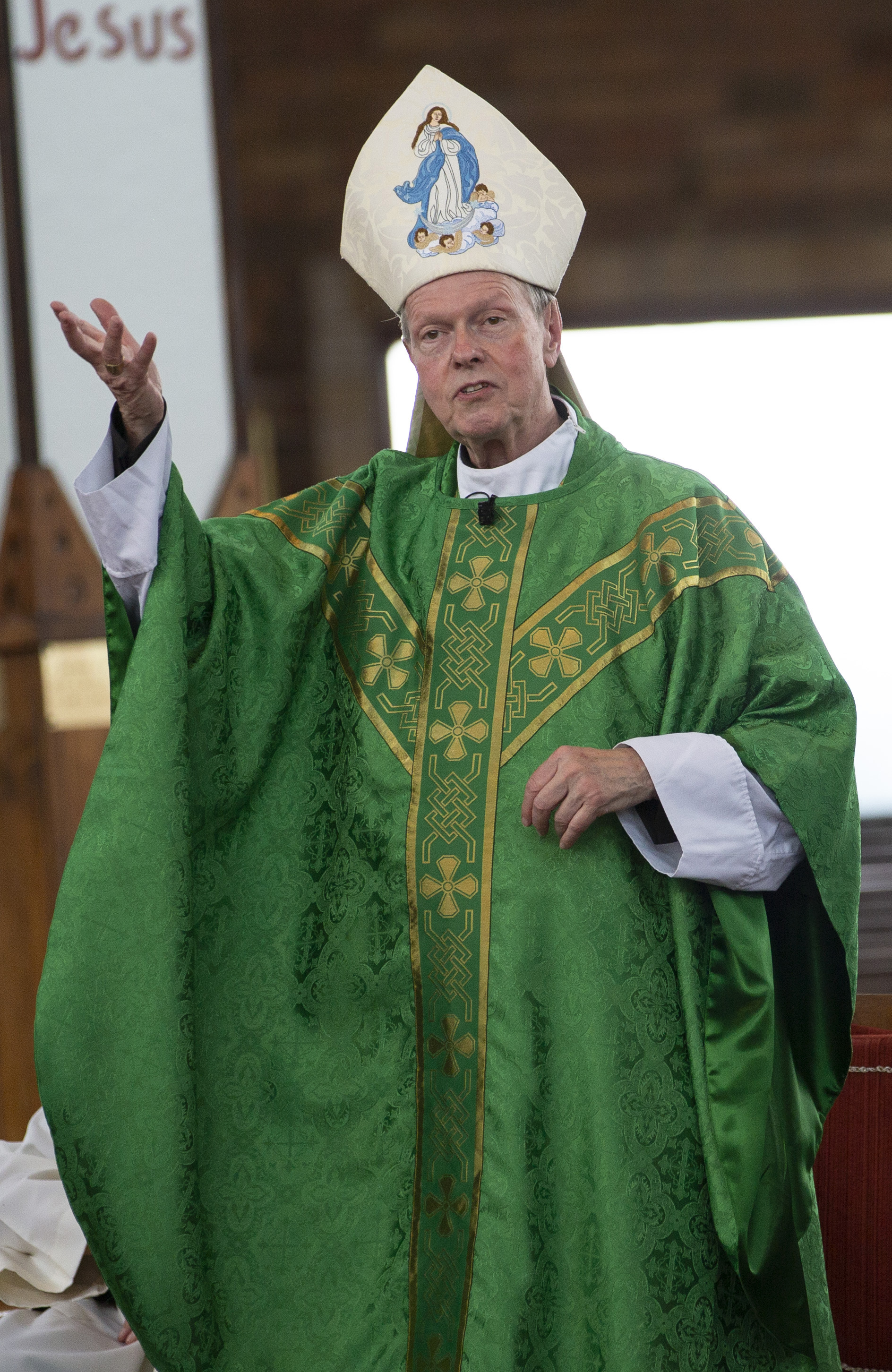April 6, 2018 at 1:53 p.m.
BOOK ON BOOTH
Anti-Catholic feelings rose after death of Lincoln
A new book about the assassination of President Abraham Lincoln includes information about Catholic and Capital District connections to that historic event.
Lincoln's birthday is celebrated on Feb. 12.
Michael Kauffman, author of "American Brutus: John Wilkes Booth and the Lincoln Conspiracies," told The Evangelist that Catholics played a prominent role in the tragedy because the assassination was "largely a Maryland conspiracy. Booth was from Maryland, and he teamed up with people from Maryland, [which] was largely Catholic."
Anti-Catholicism
Caught up in the conspiracy first to kidnap and later to kill Lincoln were such Catholics as Mary Surratt and her son John, and Dr. Samuel Mudd. One of the main witnesses testifying against them in the trials that followed the Good Friday murder in April 1865 was Louis Weichmann, a Catholic who had studied for the priesthood.
Mr. Kauffman, who spoke by phone from his home in Maryland, said that the involvement of so many Catholics led some Americans, including one of the judges at the main conspiracy trial, to "assume that Booth and others were operating under the orders of Pope Pius IX."
The result was a revival of the anti-Catholicism of the Know-Nothing Party of pre-Civil War times.
"It was absurd," the author said, noting that the conspirators also included members of the Lutheran, Methodist, Baptist, Reformed and Episcopal denominations. Booth was an Episcopalian.
Papal link
Adding to the suspicion of Catholics were the fact that Booth met Mudd at a Catholic church prior to the assassination, and the escape of John Surratt to Europe and his eventual service in the army of the Papal States.
"The pope was thought to have been very aggressively power-hungry," Mr. Kauffman said in explaining why some Americans blamed Catholics for Lincoln's death. "People thought he was trying to control American Catholics."
Thomas Harris, a judge at the military trial that sentenced four of the conspirators to death, wrote a book that posited a Catholic attempt to "collapse free institutions in America by assassinating its leaders."
Mr. Kauffman continued: "It is stunning to me that one of the people sitting in judgment happened to be anti-Catholic. It was such a half-baked idea. I can't imagine how he could take a few coincidences and come up with" a conspiracy theory.
Catholic reaction
In his research, Mr. Kauffman found that Catholic newspapers in both the north and south condemned the assassination of the president.
"Priests sermonized on the assassination," he said, "and there wasn't anyone who thought it was a positive development."
A victim of an attempted assassination on the same night as the attack on Lincoln was Secretary of State William Seward, who did not believe in a Catholic conspiracy.
In fact, the author noted, Seward "put out overtures to the pope, who was going through an Italian civil war, saying that America would keep a warship off the coast of Italy for his escape" if he needed to flee.
Capital District
In addition to Catholic connections, the Lincoln assassination has ties to the Capital District. For example, the first casualty of the Civil War was Col. Elmer Ellsworth, a close friend of Lincoln's. Ellsworth was born in Saratoga County and is buried in Mechanicville.
More significantly, the two people who accompanied Lincoln and his wife Mary to Ford's Theater in Washington, D.C., on the night he was shot were from Albany: Clara Harris and her fiance, Major Henry Rathbone. During the attack on the president, Booth severely slashed Rathbone with a dagger.
The engaged couple "had grown up together," Mr. Kauffman said, after Clara's widowed father, U.S. Senator Ira Harris, married Henry's widowed mother. Senator Harris, a native of Montgomery County, graduated from Union College in Schenectady, was a professor at Albany Law School and succeeded Seward when the latter was named to Lincoln's cabinet.
Aftermath
The couple married in 1867 and moved to Germany. There, in 1883, Rathbone murdered his wife and tried to commit suicide; he spent the remainder of his life in an insane asylum.
The author interviewed a granddaughter of the couple who said that her mother (the daughter of the couple) had witnessed the murder.
"Years later," he said, "someone remodeled a house in Loudonville and discovered a brick wall that seemed to have no purpose. Behind it was a bloody dress" -- the one Clara had worn when Lincoln was shot.
(2/3/05)
[[In-content Ad]]- Think you know the ‘nones’? Pew study shows nonreligious adults’ nuanced beliefs
- Lawmakers grapple with potential public policy responses to church shooting during school Mass
- Buried in Assisi, new saint is ‘true disciple’ of St. Francis, rector says
- ‘Christ calls us to be Christ for one another,’ Mobile’s new shepherd tells faithful
- Pope meets Israeli president, discusses ‘tragic’ situation in Gaza
- Pope saddened by loss of life in streetcar derailment in Portugal that killed 17
- Vance, second lady lay flowers at memorial commemorating victims of Annunciation school shooting
- As war nears two-year mark, Catholic leaders head to Holy Land
- Abortion is never medically necessary, ‘even in an emergency,’ experts say
- What is a spiritual bouquet? Here’s what you need to know







Comments:
You must login to comment.